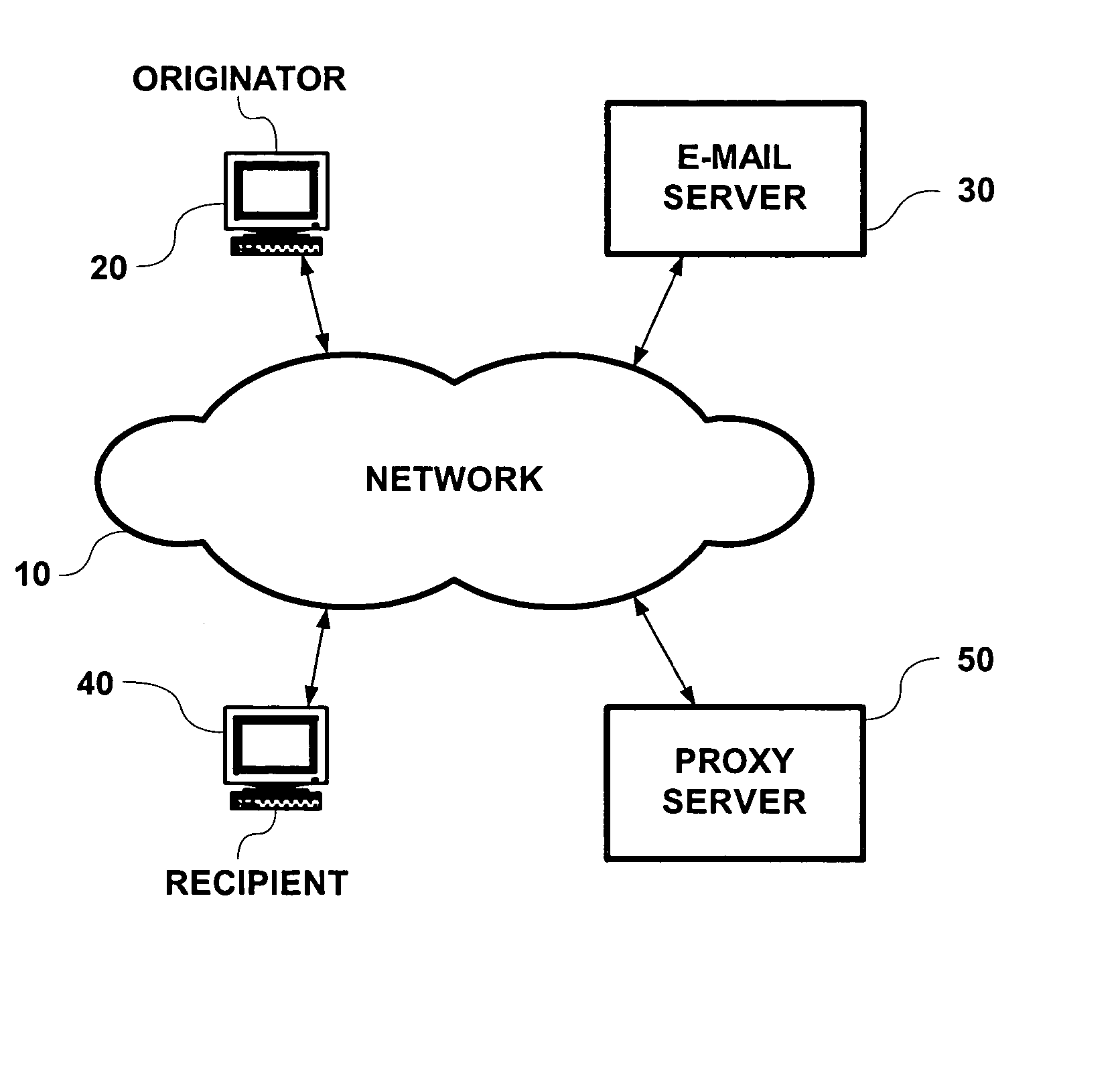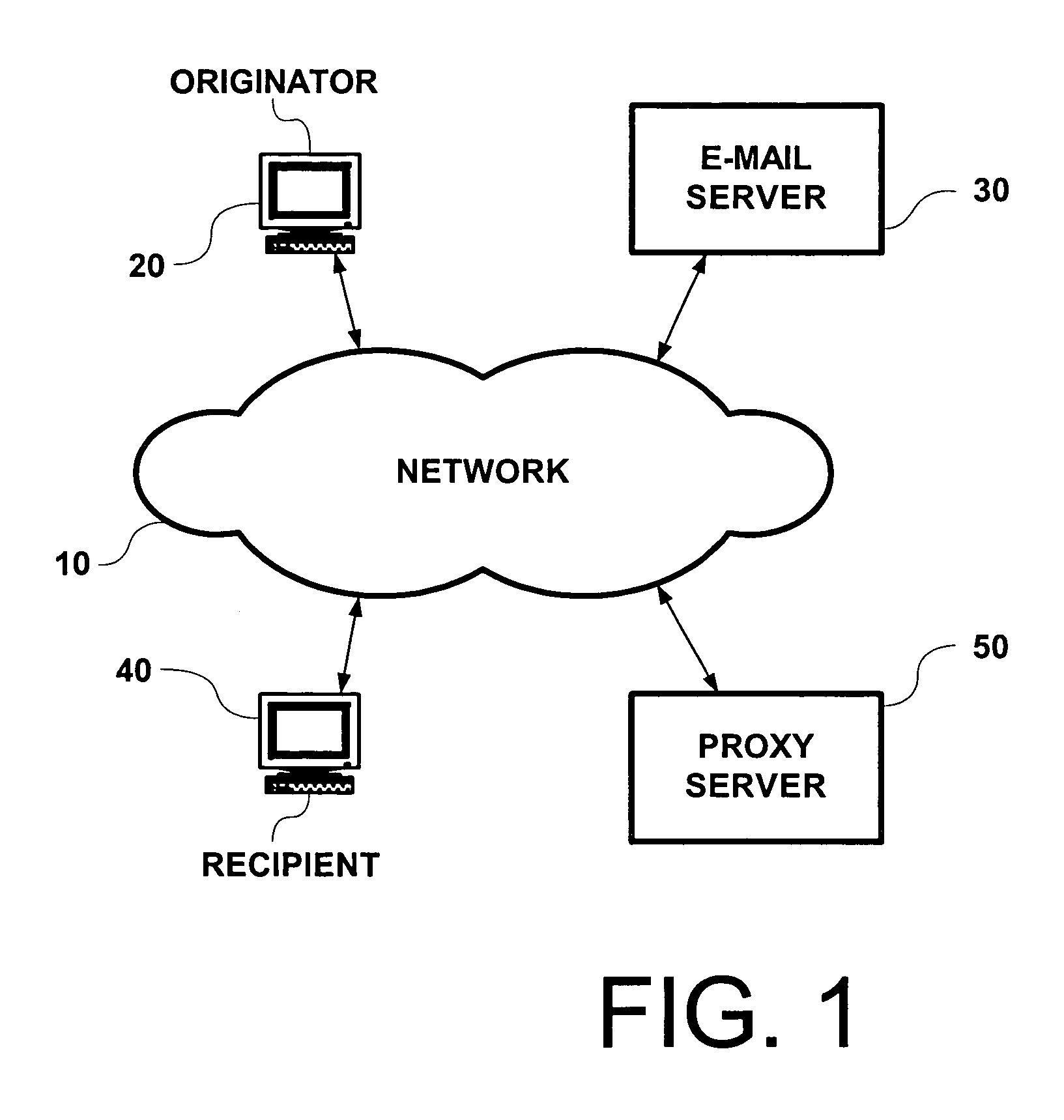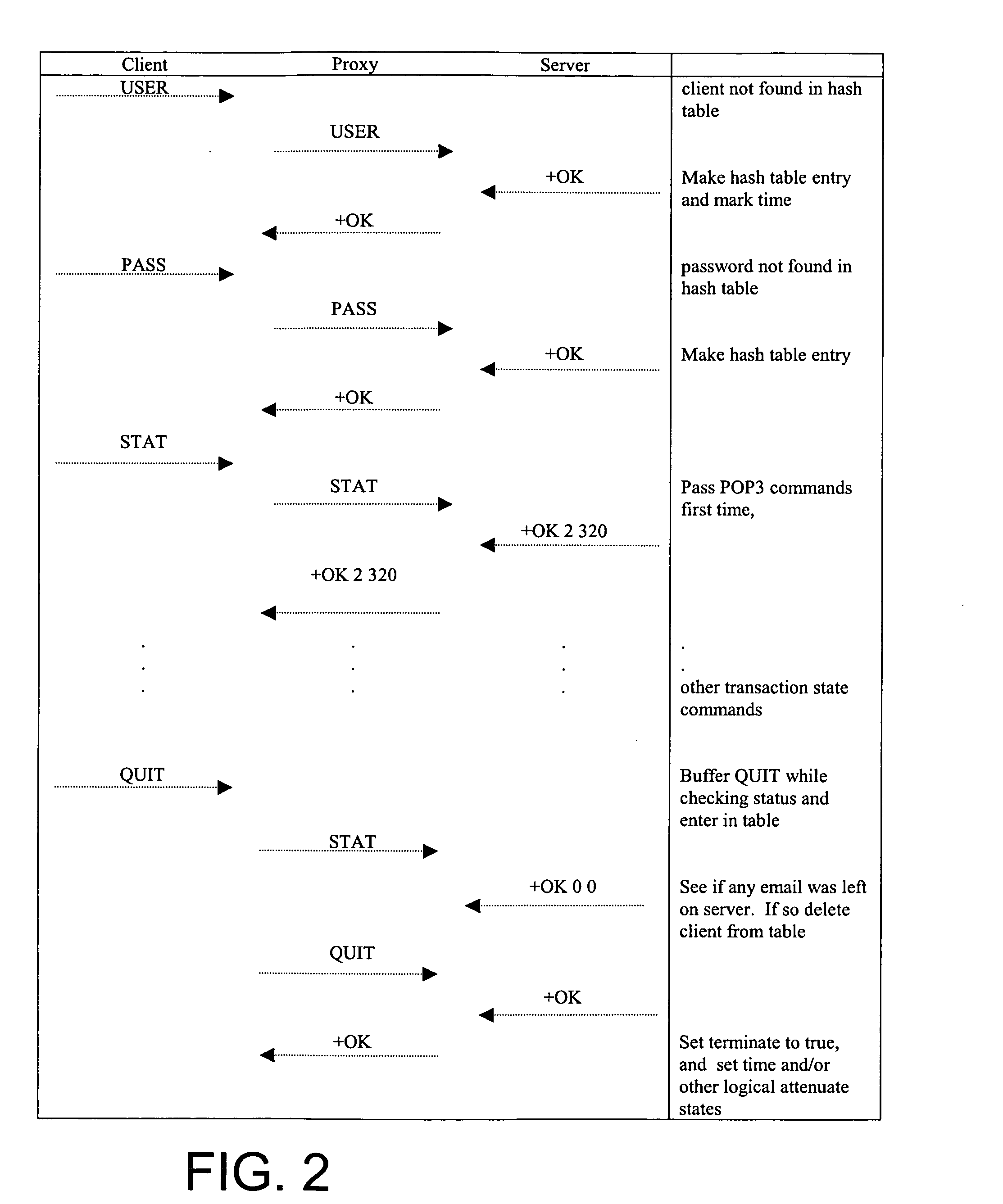Reduction of network server loading
a network server and load reduction technology, applied in the field of data networks, can solve the problems of large network traffic, large amount of network traffic, negative response of the mail server, etc., and achieve the effect of decentralizing the bandwidth demand on the overall network, reducing the distance to travel, and decentralizing the storage of e-mail
- Summary
- Abstract
- Description
- Claims
- Application Information
AI Technical Summary
Benefits of technology
Problems solved by technology
Method used
Image
Examples
Embodiment Construction
[0025] Typical e-mail client programs support a feature that performs automated mailbox checking at configurable intervals. A user may set their e-mail program to query for new mail every five minutes, for example. The “always on” characteristic of a broadband Internet service enables a subscriber to leave their e-mail grogram running and continuously polling for mail. This adds further to the load of POP3 packets on the service provider's network. And, while polling intervals will vary, empirical observation shows that over 90% of the mailbox queries return no new mail. This problem of empty POP checks is addressed by the attenuation aspect of the present invention.
[0026] Attenuation of POP checks is accomplished by a proxy server, which implements a software proxy. The proxy server intercepts POP requests that originate with its locally situated network component. As a proxy, it responds to a majority of these POP checks based on its most recent knowledge of the state of the requ...
PUM
 Login to View More
Login to View More Abstract
Description
Claims
Application Information
 Login to View More
Login to View More - R&D
- Intellectual Property
- Life Sciences
- Materials
- Tech Scout
- Unparalleled Data Quality
- Higher Quality Content
- 60% Fewer Hallucinations
Browse by: Latest US Patents, China's latest patents, Technical Efficacy Thesaurus, Application Domain, Technology Topic, Popular Technical Reports.
© 2025 PatSnap. All rights reserved.Legal|Privacy policy|Modern Slavery Act Transparency Statement|Sitemap|About US| Contact US: help@patsnap.com



